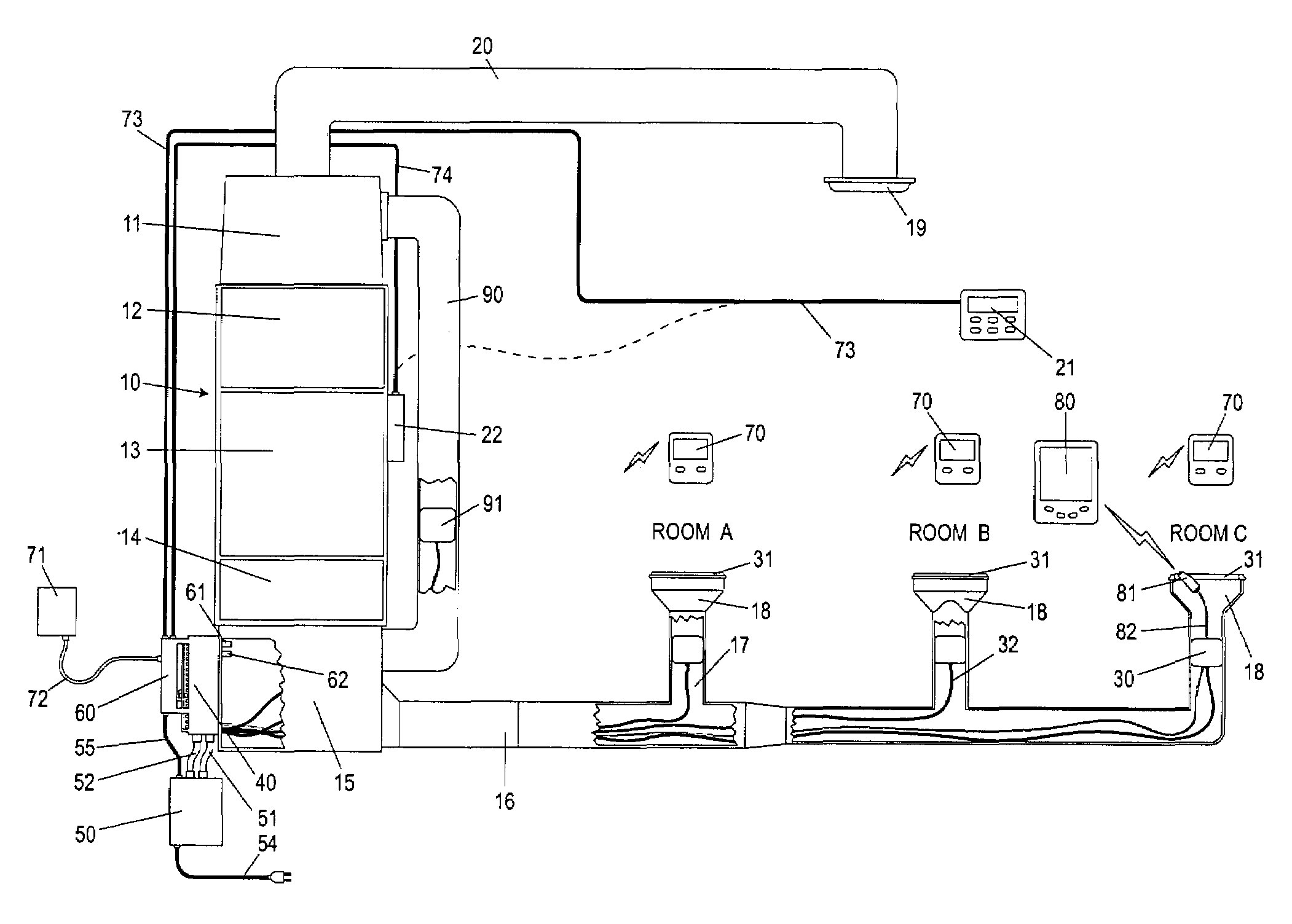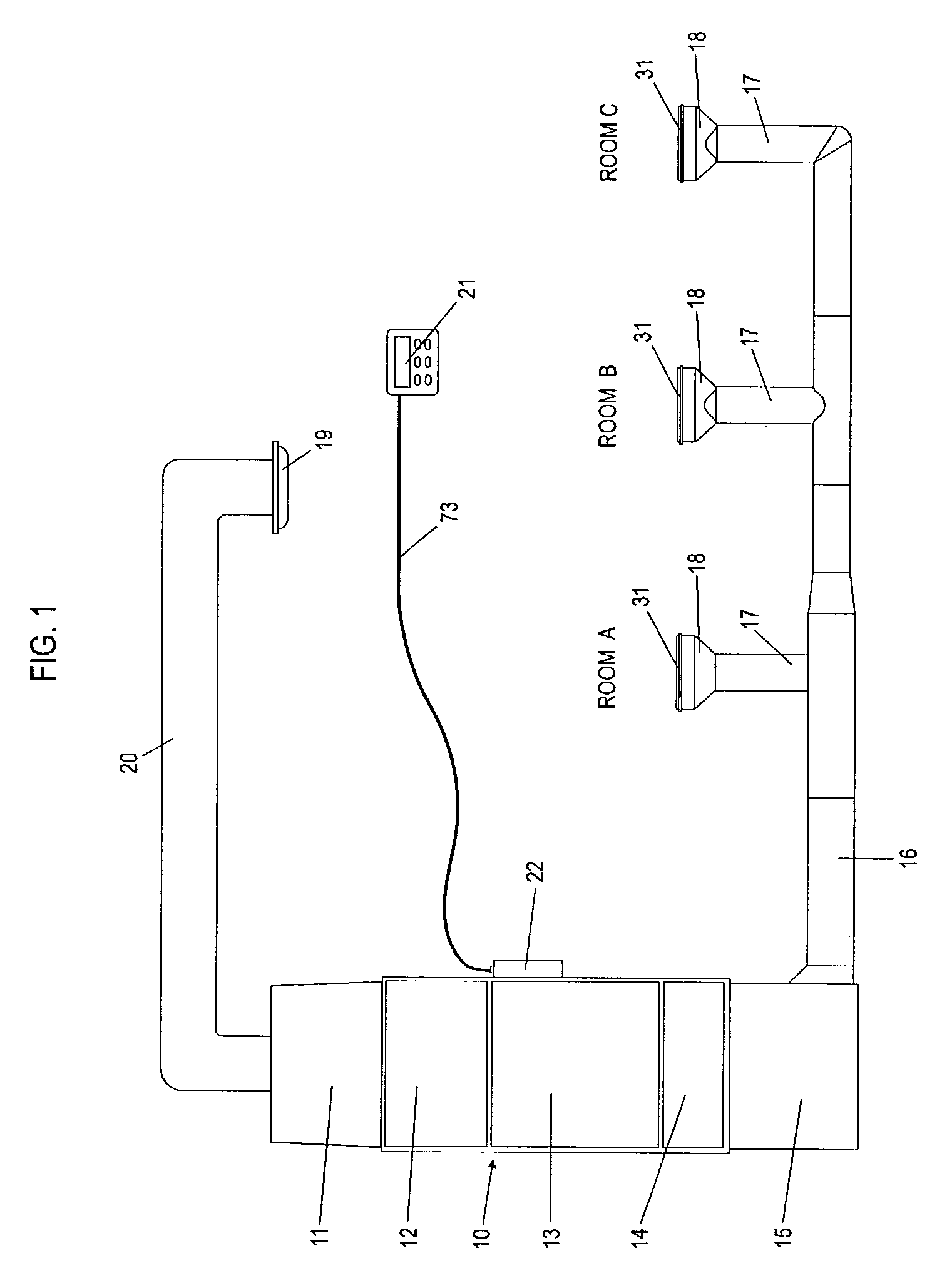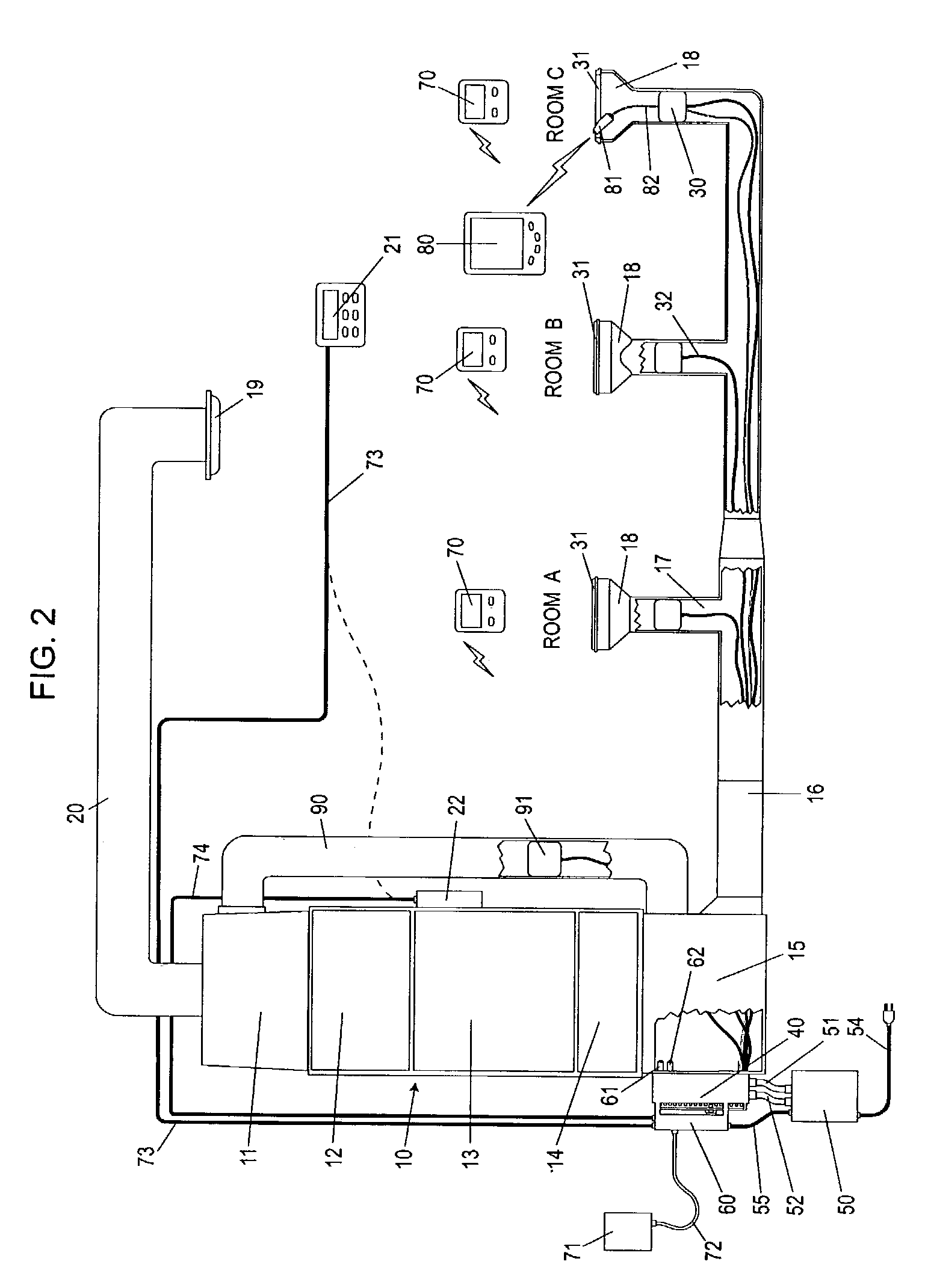Forced-air zone climate control system for existing residential houses
a forced air and climate control technology, applied in ventilation systems, heating types, domestic cooling apparatuses, etc., can solve the problems of difficult retrofitting, limited function and benefit, and inability to provide practical solutions for easy retrofitting, etc., to achieve easy installation, low cost, and low cost
- Summary
- Abstract
- Description
- Claims
- Application Information
AI Technical Summary
Benefits of technology
Problems solved by technology
Method used
Image
Examples
Embodiment Construction
[0059]FIG. 1 is a block diagram of a typical forced air system. The existing central HVAC unit 10 is typically comprised of a return air plenum 11, a blower 12, a furnace 13, an optional heat exchanger for air conditioning 14, and a conditioned air plenum 15. The configuration shown is called “down flow” because the air flows down. Other possible configurations include “up flow” and “horizontal flow”. A network of air duct trunks 16 and air duct branches 17 connect from the conditioned air plenum 15 to each air vent 18 in room A, room B, and room C. Each air vent is covered by an air grill 31. Although only three rooms are represented in FIG. 1, the invention is designed for larger houses with many rooms and at least one air vent in each room. The conditioned air forced into each room is typically returned to the central HVAC unit 10 through one or more common return air vents 19 located in central areas. Air flows through the air return duct 20 into the return plenum 11.
[0060]The e...
PUM
| Property | Measurement | Unit |
|---|---|---|
| pressure | aaaaa | aaaaa |
| radio frequency | aaaaa | aaaaa |
| frequency | aaaaa | aaaaa |
Abstract
Description
Claims
Application Information
 Login to View More
Login to View More - R&D
- Intellectual Property
- Life Sciences
- Materials
- Tech Scout
- Unparalleled Data Quality
- Higher Quality Content
- 60% Fewer Hallucinations
Browse by: Latest US Patents, China's latest patents, Technical Efficacy Thesaurus, Application Domain, Technology Topic, Popular Technical Reports.
© 2025 PatSnap. All rights reserved.Legal|Privacy policy|Modern Slavery Act Transparency Statement|Sitemap|About US| Contact US: help@patsnap.com



